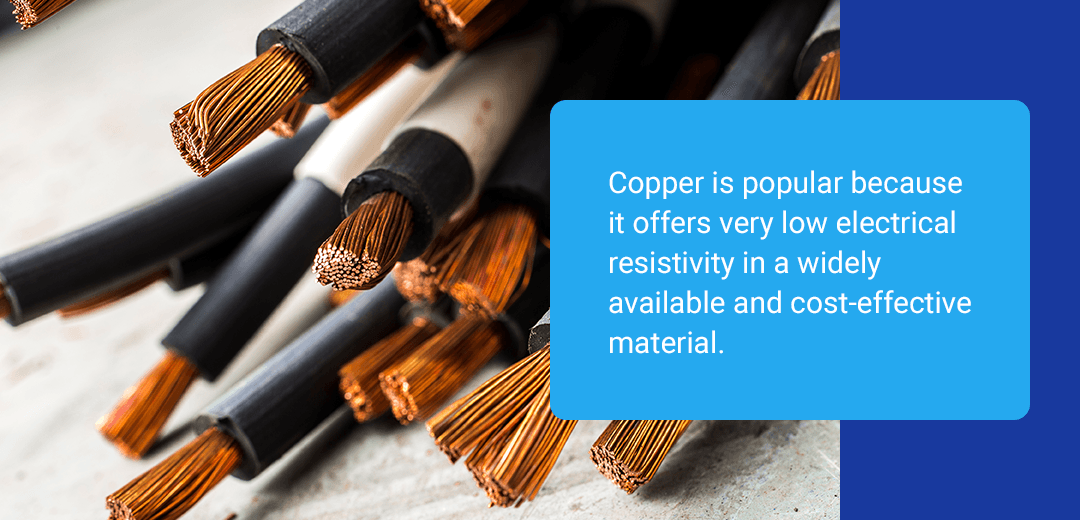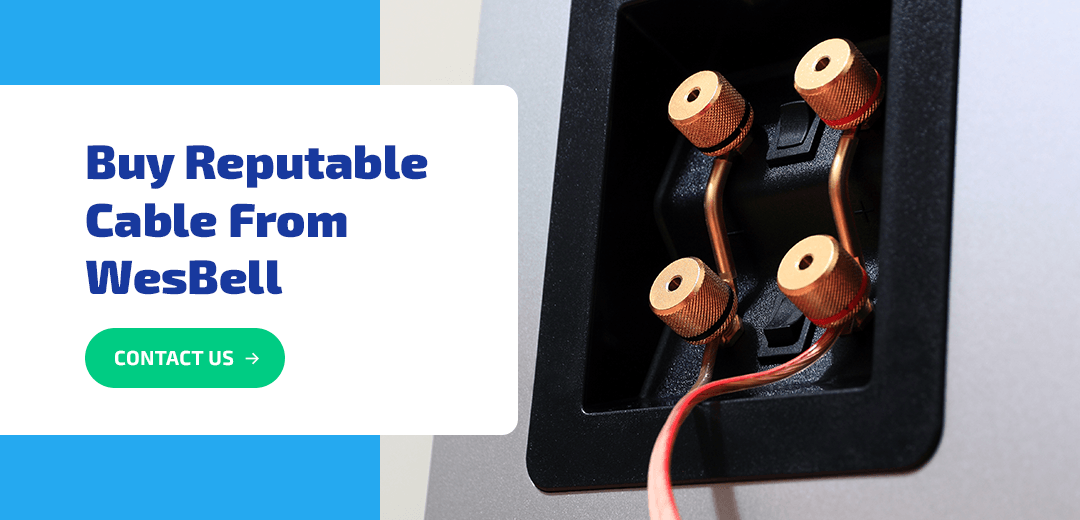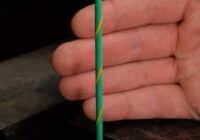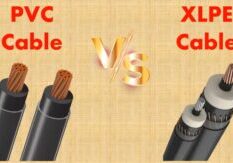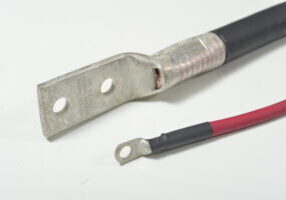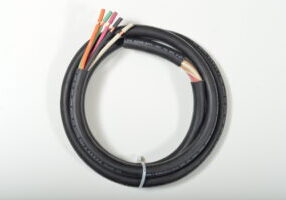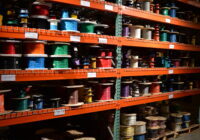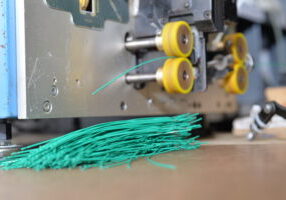
Feb 2, 2022
Selecting the Right Gauge of Speaker Wire
Speaker wire is a staple in just about any home theater setup. Despite its simplicity, you have a lot of options for speaker wire. You’ll need to carefully compare them to ensure you get the best signal. The right wire can make or break your system and help you ensure crystal clear, accurate sound transmission. With all that in mind, let’s take a look at how these different options compare.
What Is Speaker Wire?
The basic construction of speaker wire involves two copper wires, one of which is left bare and one of which is tinned, providing clear designation for each one. You may find silver-cored wire out there, but it is more expensive and not usually necessary for most applications. The cable’s conductors are bonded together, so they can easily peel apart during installation. They are surrounded by clear polyvinyl chloride (PVC) insulation.
WesBell Electronics carries speaker wire from American Wire Gauge (AWG) sizes 12-24. All options are approved by the Restriction of Hazardous Substances (RoHS) directive and by UL, LLC.
You’ll find speaker wire across many audio applications, including:
- Hi-fi and stereo speaker wire.
- Home theater setups.
- Digital audio systems.
Note that not all speaker wire is rated for in-wall use.
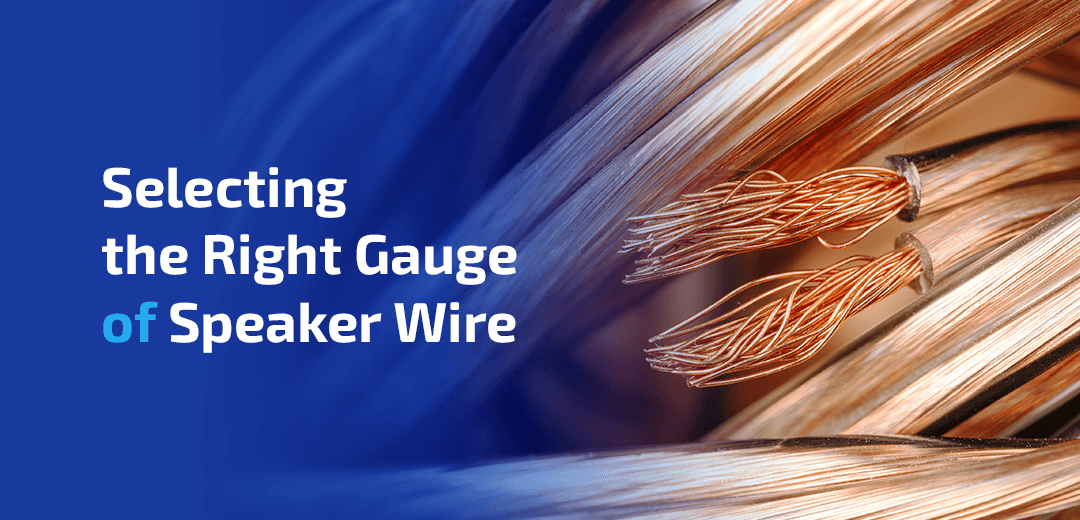
Unlike many electronics, speakers don’t come with everything you need to hook them up. To link up your amplifier and speaker, you’ll need speaker wire, which comes in several different sizes and styles so that you can select the right one for your stereo setup.
Speaker wire is made of two conductors surrounded by insulation, with one conductor each running to the positive and negative connectors on the amp and speaker. You might see some marketing hype around speaker wires, promising better sound for flashy materials, but a lot of it is unnecessary. Still, some basic features to consider, like size and length, are necessary for a strong signal. To get the best sound for the right price, you’ll need to know a few basics about choosing the right speaker wire gauge.
Speaker Wire Gauge Sizes 101
Speaker wire in North America typically uses the American Wire Gauge (AWG) system. The lower the number, the thicker the wire.
What Gauge Size Is Speaker Wire?
Common speaker wires are 12, 14, 16 and 18 AWG, but larger sizes are available. Larger gauges add cost and, of course, size, so they might be too bulky to conveniently tuck behind an entertainment center or flex around a corner. They may, however, be necessary in some applications to improve the signal.
Thicker wires have more space for the current to flow, which reduces electrical resistance. This is a key factor in speaker wire, as greater electrical resistance interrupts the flow of the signal and results in poorer sound quality. While wire gauge is a big component, electrical resistance depends on the relationship between it and other factors like length and material. Certain factors will increase electrical resistance and require larger wires. Thick wire is necessary for longer lengths, high-power applications and low-impedance speakers.
Overall, you’ll need a gauge thick enough for sufficient electrical flow and a good signal, but not so thick that it’s too bulky to use or cost-prohibitive.
Factors in Selecting a Speaker Wire Gauge
The most important factors in selecting your speaker wire gauge are impedance and length, but wire material can also affect its performance to some degree.
Speaker Impedance
Your speaker system’s impedance will influence how much power it will use. Assuming a moderate cable length, here are some rules of thumb for sizing your speaker wire according to impedance:
- 4 ohms or fewer: Fourteen- or 12-gauge speaker wire is a good place to start. These speakers pull a lot of power, so you’ll need a thicker wire.
- 6 ohms: Opt for 16-gauge speaker wire. This is a good middle ground.
- 8 ohms: Eighteen- or 16-gauge speaker wire is usually suitable for these speakers, but if you’re working with a longer run, like 50 or 75 feet, consider bumping your wire up to 12 or 14 AWG.
Speaker Wire Length
Long wire runs will also contribute to the necessary gauge size. The longer the signal has to travel, the more opportunity there is for electrical resistance. For most typical home theater setups, you probably won’t need enough cable to make much of a difference and can use the sizes listed above.
If you’re working with longer runs, such as outdoor setups or event spaces, you’ll want to start increasing the gauge as you use more than 50 feet of wire. Resistance can significantly increase with length, so it’s best to move up to 12 or 14 AWG if needed.
To determine your length, measure the distance from the amp to the speaker and add an extra 5 feet on each end to give the cable some slack.
Speaker Wire Core Material
You’ll find a few different types of materials available, but the most common by far is stranded copper, which bundles multiple pure copper wires together. Copper is popular because it offers very low electrical resistivity in a widely available and cost-effective material.
Some other types of wire cores you might see include:
- Copper-clad aluminum: Aluminum also offers decent electrical resistivity, but it still relies on a thin copper layer to improve performance. For reference, aluminum’s electrical resistivity is 2.65×10-8 ohm meters (ΩM), with copper offering 1.68×10-8 ΩM.
- Silver: Silver might be advertised as the “premier” material for serious audiophiles. It offers just slightly better electrical conductivity — 1.59×10-8 ΩM — so you might get away with a thinner wire. However, silver is more expensive than copper, so you’d likely end up paying the same as you would for a thicker copper wire. You might also run into silver-plated copper wires.
- Oxygen-free copper: By forming copper wires to precise, oxygen-free specifications, manufacturers tout oxygen-free copper (OFC) cables as offering better sound quality. However, the difference between OFC and standard electrical copper is minuscule. Standard electrical-grade copper, C11000, is already 99.95% pure. The general consensus in the industry is that this extra half a percent doesn’t make an audible difference in home theater applications.
If you’re interested in these materials, it is possible to use other types of wire — reach out to a pro to discuss your application.
In-Wall and Outdoor Speaker Wire Placement
If you’re only running cables along your living room floor, you don’t need to worry too much about building codes or threats like moisture, pests and temperature. But if you’re running wire outdoors or through the walls, you’ll need to look for specific ratings:
- Walls and ceilings: For running speaker wire along walls or the ceiling, you’ll need to find UL-rated wire designated as CL2 or CL3. These ratings signify cables with a certain level of fire resistance and surge protection that the National Electric Code (NEC) requires for building construction.
- Outdoors and underground: If your speakers are outdoors and you need to run wire through the ground, you’ll need wire rated for direct burial to protect against outdoor threats. It’s also a good idea — and sometimes required — to run it through polyvinyl chloride (PVC) piping to keep it safe from errant digging.
Many types of wires can accomplish these purposes, but they may not be labeled as speaker wire. Reach out to WesBell to discuss your project and we’ll be happy to help you find the right wire.
Buy Reputable Cable From WesBell
With so many options and materials that are hard to verify, it’s essential to work with a reputable provider. Here at WesBell Electronics, we offer an array of products from trusted manufacturers and have the expertise to help identify the best speaker wire for your home theater. We won’t sell you materials you don’t need — we help you find the cable for the job, offering great sound at the right price.
Our inventory includes 12- to 24-gauge speaker wire, with all options available by the foot. If you need something with direct burial or in-wall ratings, we can help there, too. Browse speaker wire online or contact us to learn more!

